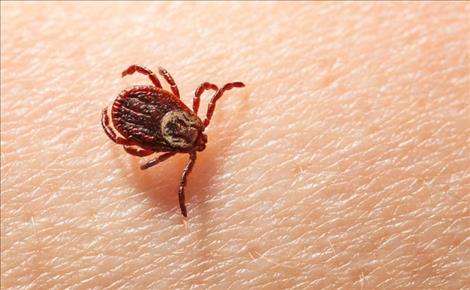Ticks emerge as weather warms
Hey savvy news reader! Thanks for choosing local.
You are now reading
1 of 3 free articles.
FLATHEAD RESERVATION – Simply mentioning the word tick instinctively makes people start itching and checking for ticks, but no matter how uncomfortable they make you feel, it is a very important conversation to have.
In Montana, ticks can transmit several tick-borne illnesses to people, such as Lyme disease, Rocky Mountain spotted fever, Colorado tick fever and tularemia or “rabbit fever,” according to the Centers for Disease Control and Prevention.
Ticks are not classified as an insect. They belong to the family of arachnids and are closely related to spiders and mites.
Ticks are found in grassy or brushy habitat, they do not jump or fly, they simply hitch a ride onto animals or people passing by. They are attracted to the heat, odor and breathing of their host.
There are many ways to prevent a tick bite and limit your exposure to ticks in general. When hiking, stay on paths and walk down the middle of trails to avoid rubbing against brush and picking up waiting ticks. Wear light colored clothing, which will make it easier to spot a tick.
Ticks can often be captured before they bite. They tend to travel toward areas of warmth, such as the scalp, skin folds and under armpits. Insect repellents, especially those containing 100 percent DEET, are the most effective means of protecting yourself against tick bites. Apply it to clothing prior to your spring outing, and always check yourself, children and pets when you return.
For more information visit www.cdc.gov/ticks. Stay safe and tick free.
















